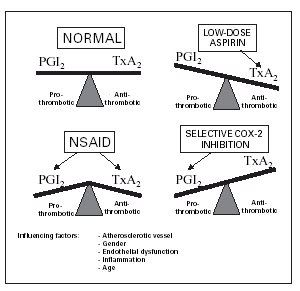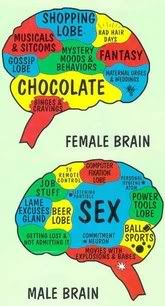Hurakan or Yahweh?
As a Midwesterner-by-birth, and Midwesterner-at-heart, tornadoes epitomize the Big, Bad Storm for me. The flat terrain of the region where I grew up afforded excellent views of roiling squall lines as they marched across the prairie. This was exciting, in that negative-ion charged kind of way, but also frightening, because occasionally, the monster thunderstorms would drop a twister from their wall clouds. Although we were driven to our basement twice when I was a kid, whatever tornado passed nearby did no more damage than uprooting a few big maple trees in our yard, ripping some shingles off the house and barn roofs, and flattening the neighbor's silo like an accordion. Still, these storms made an impression on my psyche, and I experience recurring dreams in which I try to make my way to shelter as the storm approaches. In some of these dreams, I am back on the family farm and attempting to round up the passle of semi-feral cats so that I can take them to safety. Maybe that dream imagery was a harbinger of my current duties in my workplace. Curiously, I wake up refreshed after these dreams.
Tornadoes are devastating storms to be sure, and the big ones like the Great Plains twisters cause significant loss of life and property damage. The Xenia (Ohio) tornado and the storm system which spawned it and other funnel clouds are prime examples. Yet, their destructiveness seems more concentrated compared to a powerful hurricane, such as the one which is battering Louisiana, Mississippi and Alabama as I write this.
Although I'm familiar with tornadoes, and fortunately with passing familiarity since I have not experienced direct hits on my various homes, I encountered a hurricane only once, and I was mightily impressed. Leaving our kids with their maternal grandmother, my husband and I traveled to Chatham, MA over Labor Day weekend, 1996, to attend a wedding and otherwise enjoy the company of a bunch of longtime friends who were re-uniting for the event. Hurricane Eduardo was brewing to the south that weekend, and worked itself up to a Category 4 storm as it approached the Outer Banks of the Carolinas. Then the bugger took a turn and began to make a beeline toward New England. Its track took dead aim at Chatham which is nestled in the elbow of Cape Cod.
Our friends' wedding, both ceremony and reception, took place at a nice resort on the coast. During the ceremony, the outriders of Eduardo streaked across the sky. As the reception was well underway, we periodically dropped by the resort's bar with its television and well informed bartenders to get updates on the storm. The guests became increasingly nervous. Many opted to leave early and drive back to Boston. We were staying in a glass walled suite of a little bed and breakfast. I was torn between getting stuck in that fishbowl (our proprietor assured us of shelter in her house) or mired in traffic on Rt. 6. My husband, a.k.a. "The Weather Yenta," checked out the radar and predicted the cooler waters offshore would weaken the storm, and that the jet stream would push the eye eastward. So we decided to stay put, and with that decision, proceeded to imbibe plenty of good red wine. Later, we joined a number of guests from the wedding at a local restaurant for a New England version of a hurricane party.
Sure enough, Eduardo diminished to barely a category 1, and its eye passed closer to Nantucket, thus reinforcing my husband's insufferable amateur meterological predilections. However, if the winds and rain which hit late that night and the next morning were characteristic of a category 1 storm, or even a strong tropical depression, I cannot fathom the experience of hurricanes in the category 3 through 5 range. Tornadoes arrive and are gone in a flash. Wimpy Eduardo was bad enough for a much longer period. The prospect of howling winds of 100+ mph for hours is horrific. Fortunately, hurricanes of that magnitude are rare along the northern Atlantic seaboard and in New England although historically, some big ones have hit these regions, as noted in the National Hurricane Center's historical archives.
In a fit of perimenopausal insomnia, I woke up around two o' clock this morning. I turned on the television and began channel flipping in an effort to find something mindnumbing enough to lull me back to sleep. Electronic Ambien, if you will. Out of curiosity, I checked out the talking heads on Fox News, CNN, and MSNBC. The televised news coverage of the hurricane struck me as ghoulish. Maybe it was just me, but I discerned a perverse "Oh, wow! Maybe New Orleans will be sunk!" tone in the reports. It was like the yammering newscasters wanted this monsterfucker of a storm to smack into the Big Easy and drown it in a toxic flood despite protestations, e.g. "terrible tragedy," to the contrary. More egregious was the MSNBC newscaster's repeated use of "storm of biblical proportions." My insomnia addled brain was taken aback: "Biblical proportions? What the fuck?" I recall he tossed in a few "apocalyptic's," too. Maybe I am oversensitized by the depressing developments pertaining to "intelligent design" as a proposed part of "education" in this country, and for hate-spurting commentary like that of Pat Robertson. Well, OK, so maybe assassinations of particularly noxious heads of state and icky dictators might be a more cost-effective means of meddling in foreign nations' affairs, but did Robertson actually have to articulate this for crapssake? In any case, I immediately read sub-text into the phrase, "storm of biblical proportions" which was bearing down on New Orleans. Yeah, buddy! Let that big mothafukkah of a storm hit those libertines and faggots and drown 'em all. That's what Jesus wants! And you'll turn into a pillar of salt if you stop on I-10 to turn around and look.
Eventually, I felt drowsiness encroaching on my ill-defined outrage , so I shut off the tube, and went to sleep. This morning, I checked out the MSNBC web site, and there it was: "storm of biblical proportions." A couple of hours later, the phrase was absent from the web site. I can only hope there were objections raised to it. Why inject religion into this, and on an MSNBC broadcast/web site to boot? If this were some Christian cable network, it would be less grating, although I wouldn't be watching such. But the use of the phrase solidifies my paranoia regarding the collusion of the American Idiot mainstream media (thank you, Billie Joe Armstrong) and "certain special interest groups."
The word "hurricane" derives from Hurakan, the Mayan creation god who also presided over thunderstorms, hurricanes, and whirlwinds. It is understandable that ancient, pre-technological mankind interpreted natural disasters as anger of the gods. Unfortunately, it would appear that there are those of the 21st century who do as well.


